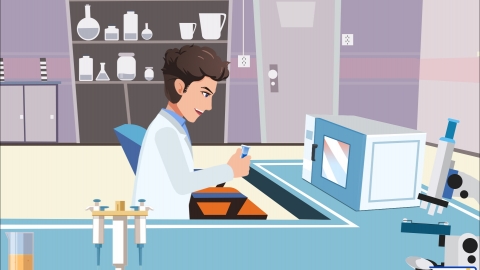How is norovirus detected?
Under normal circumstances, norovirus can be detected through antigen testing, nucleic acid testing, serological testing, immunoelectron microscopy, electron microscopy, and other methods. If there are any concerns, timely medical consultation is recommended. Detailed analysis is as follows:

1. Antigen Testing
Antigen testing is primarily conducted using techniques such as enzyme-linked immunosorbent assay (ELISA). A patient's vomit or fecal sample is collected and sent to the laboratory for analysis to determine whether norovirus antigens exist in the sample. If two red lines appear on the test strip, it indicates a positive result, suggesting a possible norovirus infection.
2. Nucleic Acid Testing
Nucleic acid testing employs polymerase chain reaction (PCR) or reverse transcription-polymerase chain reaction (RT-PCR) technology to detect norovirus RNA sequences. A positive test result indicates the presence of norovirus nucleic acid fragments in the tested sample, which can be used for diagnosis.
3. Serological Testing
This method involves analyzing a patient's blood sample to determine whether a norovirus infection is present. Following a norovirus infection, antibody levels in the blood increase. Thus, a significant rise in antibody titer in the serum may be observed after infection.
4. Immunoelectron Microscopy
Immunoelectron microscopy involves detecting norovirus by using specific antibodies to bind to virus particles. The labeled virus particles can then be observed under an electron microscope. If numerous norovirus particles are observed, it suggests a possible norovirus infection.
5. Electron Microscopy
Immunoelectron microscopy utilizes electron microscopy to detect the presence of virus particles, analyze their morphology, and structure. If spherical virus particles with small diameters and protein coats are observed, a norovirus infection can generally be diagnosed.
It should be noted that a combination of the above testing methods may be required for diagnosis. To ensure accuracy, testing should be performed under the guidance of a qualified healthcare professional.






